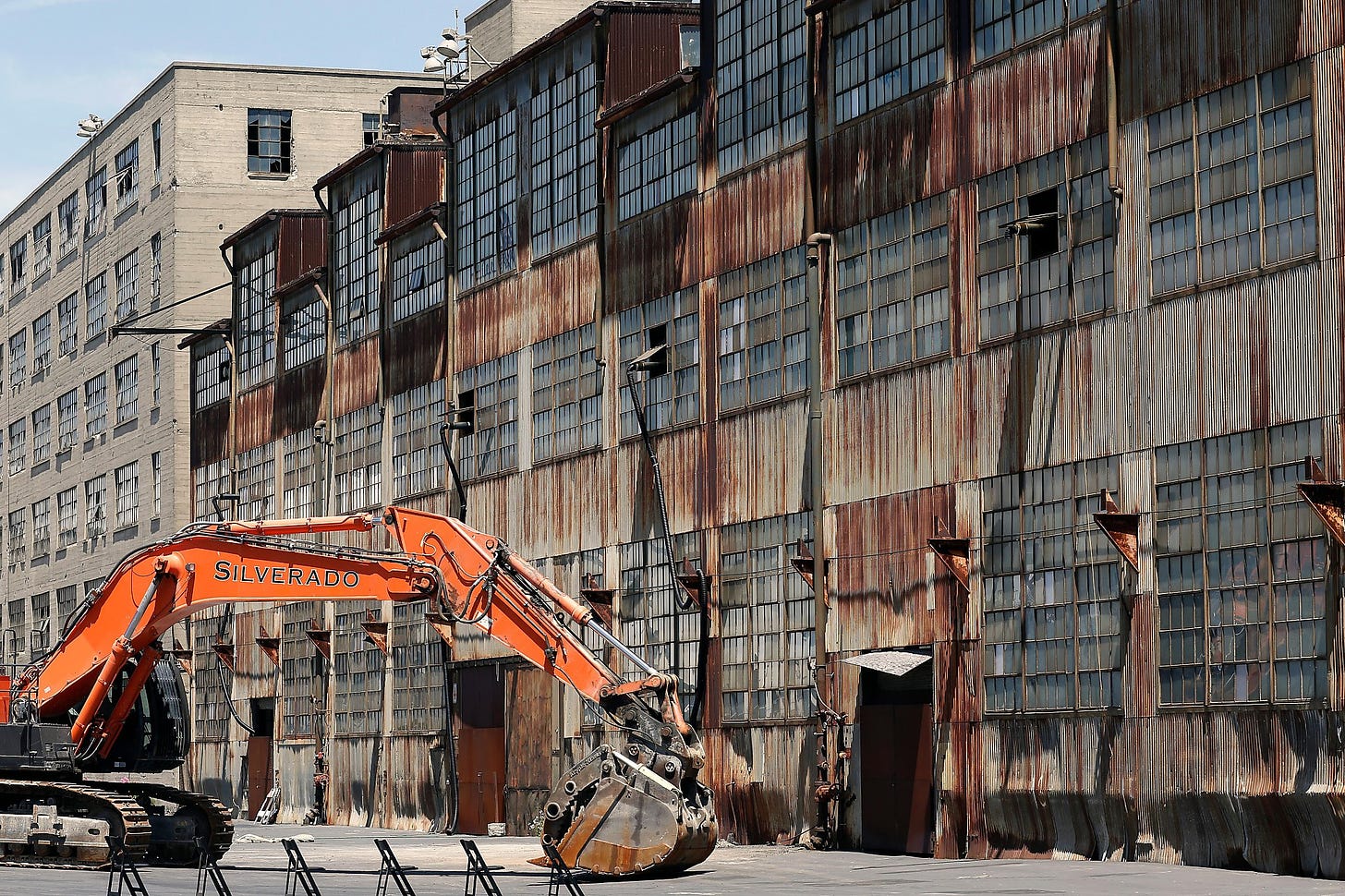Building off the discussion of the dog’s breakfast that is our ship repair capacity on the West Coast that we discussed yesterday, let’s look at a vignette in recent history.
First of all, one can argue that the world’s best protected location that is almost designed for a naval power is San Francisco Bay.
In the post-Cold War era, greed combined with anti-military politicians from the area ensured that almost all of them were closed - privatizing profit - capital or political - and socializing risk, mostly in the national security arena.
Let’s go back to 2017:
After 150 years of continuous operation, the shipyard at Pier 70 shut down Friday, the victim of a legal squabble between a multinational corporation and a much smaller company. The big boy no longer wanted to operate the business while the little guy thought better of taking it over when it became apparent the repair facility itself was in need of millions of dollars of repairs.
Stuck in the middle was the Port of San Francisco, which owns the dry docks, and the men and women for whom the shipyard — and the majestic vessels they repaired — was both a living and a way of life.
James White is among the last handful of employees that were laid off from their jobs at the former BAE Systems shipyard to pick up their belongings at Pier 70 in San Francisco, Calif. on Friday, May 26, 2017. The shipyard and dry docks were acquired by Puglia Engineering but backed out of the deal when it claimed there were issues it inherited that were never disclosed.
For a dozen years, BAE Systems, which has a $27 billion market cap, operated the repair facility, which consists of two dry docks. One, Dry Dock No. 2, is a monumental steel cradle capable of lifting sparkling white 900-foot cruise ships weighing 60,000 tons. The other, named Eureka, is smaller: at 528 feet long, it can hoist ships weighing 14,500 tons.
For most of that time, BAE kept the bigger of the two dry docks busy — it was the largest working dry dock on the West Coast and the only one capable of hoisting the late-model, jumbo cruise ships out of the water. But then a bigger dry dock, with larger cranes, opened near Portland, Ore., and the cruise ships migrated north.
It isn’t just the facilities - it is the workers.
Meanwhile, BAE decided San Francisco didn’t fit into its ship repair plan, which consists mostly of multibillion-dollar contracts with the U.S. Navy at facilities adjacent to Navy yards in the southern United States, Hawaii and Southern California. It sold the Pier 70 business to Puglia Engineering, which is based in Washington state. Puglia paid just $1 for the business but assumed $38 million in pension liabilities.
When Puglia took over, there had consistently been 250 employees at the shipyard, a number that went up when things were busy and down during slow periods. In February, six weeks after assuming control of the yard, Puglia filed notice of imminent closure. In a deal with the port, it agreed to keep it open for 90 days but laid off many workers in February and more in March. On Friday, it was goodbye to the bare-bones crew — fewer than a dozen — that had stayed on to wind things down. But others who had been previously pink-slipped showed up to witness the sad conclusion.
…
Coleman said the workers are in a tough spot, going from steady work to no work in a short period of time.
“I don’t have a Plan B, a lot of us don’t have a Plan B,” she said. “We don’t know how we are going to pay our bills, feed or families or get medical insurance.”
But port Director Elaine Forbes said there is some hope for the workers. She said several shipyard operators are interested in taking over the yard. The port hopes to have a new request for proposal issued before the end of July.
“It’s a sad situation, but I’m hoping it’s only temporarily sad,” Forbes said. “We are getting calls from operators who think there is a viable market for ship repair in San Francisco.”
No, that isn’t what happened at all. The developers have it for them.
There it is. What more is there to be done?
I’m not sure what is going to happen to Dry Dock #2 - once the largest working dry dock on the West Coast, and its 66,000 ton lifting capability, or the Eureka Dry Dock with its 14,500 life capacity. They both seem to be doing nothing but rusting away.
Like the Blount Island Offshore Power Systems crane we covered before and countless other examples since the defeat of the Soviet Union and adoption of the Goldwater-Nichols dead hand, we have a long record of refusing to see the larger national security picture because of very narrow interests.
Those who have the responsibility of stewardship continue to fail and the nation and its Navy suffers.






Penny wise and pound foolish. Describes our current society to a t.
On one hand, San Francisco and environs are practically hostile territory to the DoD.
On the other hand, can we move a floating dry-dock down to San Diego for the Navy?
And on the gripping hand, if we were subsidizing ship building and maintenance, we wouldn’t have this problem.
Time for a reckoning.